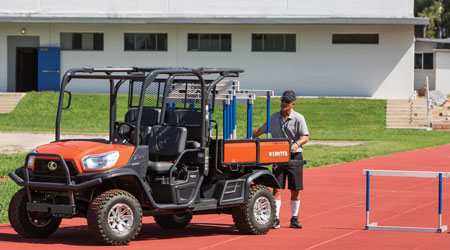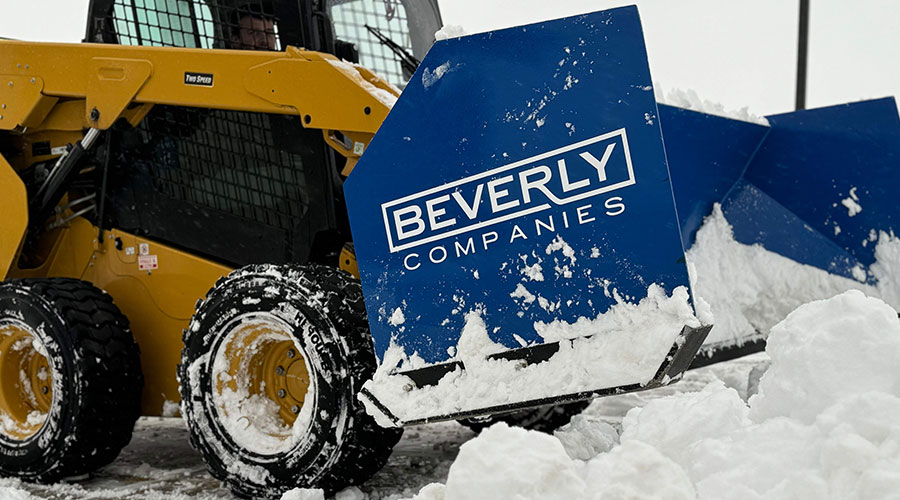Successful Specification Strategies for Utility Vehicles
Matching department needs to vehicle options spells success for managers.
For grounds managers looking to purchase a new utility vehicle, there have never been more choices. No longer are managers forced to make large sacrifices and choose between a couple of styles. The available options can fulfill most needs a grounds department have and can be customized to particular sites and intended uses.
As with every purchasing decision, research is the key to ensuring a selected vehicle that will serve the department for years to come. Before selecting a particular brand or style of utility vehicle, managers must determine department needs. These needs can be as basic as moving people and small supplies, or they can be as complex as plowing snow or moving crews with equipment on trailers. A department’s unique needs will narrow the choices of manufacturers, and it is important to not force a decision at this point. Consider department needs in relation to the styles of utility vehicles available and evaluate the tradeoffs.
Regardless of site needs, the correct vehicle is probably not clear cut, but a very good choice available. There are always trade offs with equipment purchases, and utility vehicles are no different. It also might help to consider utility vehicles as a fleet with the understanding that they might not all be the same and each can serve a unique purpose. Evaluate each site need with a different style of available vehicle.
Critical components
Managers face major decisions in selecting utility vehicles, including the number of passengers it can carry, the powertrain, size, and the payload capacity. These decisions will narrow the options considerably and will likely leave just a few vehicle options from different manufacturers.
The powertrain selection is likely the most important decision. With current advances in combustion and electric motors, managers have more viable choices than ever. Depending on the model, gasoline engines will be available in either electronic fuel injection (EFI) or carbureted versions. EFI engines are more complex and cost more but are more efficient, cleaner, will require less maintenance than carbureted models.
Diesel engines can be quite powerful, efficient, and are likely to last longer. Many models are cleaner than their gasoline counterparts. The tradeoff for this benefit is higher cost and greater complexity. Diesel engines are reliable, but repairs are likely to require a trip to the dealer. It is also common for diesel engine models to cost 25 percent more than their gasoline counterparts. Diesel powered vehicles are likely to have the lowest annual cost of ownership, but their higher initial cost might not make them the best choice.
Advances in batteries have made electric vehicles a viable option for many sites. They have the advantage of being silent and having low carbon emissions footprints, and they have fewer parts to service and break down. Their initial purchase cost is higher than similar gasoline vehicles but will likely cost less over their lifetime due to the low charging cost. Most major brands include onboard 110 volt chargers that eliminate the need for special charging stations or high-powered electrical circuits. Electric vehicles are powerful and can go a full day without charging, making them viable options for most sites.
Managers also will have to consider whether to select two- or four-wheel drive.
Four-wheel drive is useful, but if operators will not need it, the option can be a waste of resources. For vehicles that will have to push snow or be used in harsh winter conditions, four-wheel drive is a must. It also is a good choice for applications involving heavier payloads and hills, such as spraying and topdressing. For warmer climates and sites where the vehicle will stay on dry pavement, cheaper two-wheel drive options are likely to be the most cost-effective choice.
Many utility vehicles are available with two- and four-seat options, with some offering even more capacity. The setup of grounds crews and the purpose of the vehicle will determine this choice. Vehicles with a second row of seats are longer, making them harder to park and store. The additional seats and passengers also reduce the available payload and towing capacity. But if it is more efficient to carry three of four people in one cart, the models that can hold more passengers will be a more cost-effective choice. These expanded-capacity vehicles cost more, but the cost per passenger is lower.
The last major considerations in selecting a utility vehicle are size and payload capacity. It does a department no good to have a new vehicle that is too large to fit through a gate or drive on a sidewalk. It also is not useful to have a vehicle that cannot carry or tow the amount of material work crews need.
Managers and equipment operators need to read the manuals for any vehicle the department might purchase. Consider payload capacity. 500 pounds in the bed seems like a lot, but this equates to only 10 bags of fertilizer or ice melt. Crews should not overload vehicles because such actions lead to accidents and mechanical failure. Most manufacturers offer vehicles of different sizes and with different payload capacities, so managers need to understand needs and purchase accordingly.
Related Topics:













